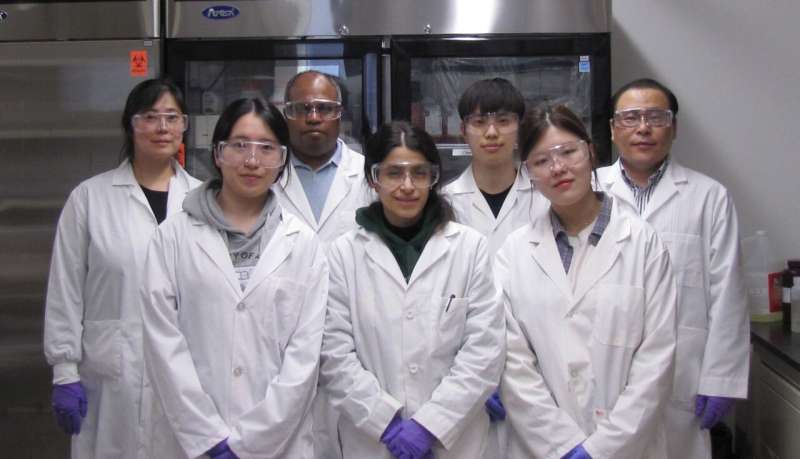This article has been reviewed according to Science X's editorial process and policies. Editors have highlighted the following attributes while ensuring the content's credibility:
fact-checked
trusted source
proofread
Light-activated solution kills infectious viruses and bacteria on contact

A University of Alberta engineering researcher has developed an antimicrobial solution that kills infectious pathogens on contact with face masks and other personal protective equipment (PPE).
The substance can be sprayed on or used to soak protective fabric and respirators, or it can be applied as a film to high-traffic surfaces such as elevator buttons, doorknobs and handrails, says Hyo-Jick Choi, a professor in the Department of Chemical and Materials Engineering.
Choi says his substance has been tested on the human coronavirus, influenza virus, and multiple infectious bacteria, and has been shown to "kill them effectively."
Filtration of infectious droplets by PPE fabrics currently depends mainly on mesh size, says Choi. Once captured on the surface of such fabrics, viruses and bacteria can survive from a few days to several weeks, "raising safety concerns about contact transmission from used fabrics during use and disposal."
Choi's "universal pathogen negation substance" can easily be applied to any conventional fabrics and solid surfaces of PPE, he says, efficiently inactivating infectious viruses and bacteria through physical contact.
The antimicrobial research is part of a two-pronged program Choi and his team are working on to reinforce pandemic preparedness. They are also working on a solid vaccine that can be taken orally—easier to administer than injection, but also more stable and easier to store than solutions that require refrigeration.
Conventional lab-level attempts to develop antimicrobial compounds—using biochemical, metallic or carbon-based materials—have been unable to overcome issues of slow inactivation, toxicity, rapid loss of antimicrobial activity and scalability limits, says Choi.
His antimicrobial molecules are activated in the presence of light—even indoor light, "which can be very weak," he says—and it can be applied to surfaces permanently. Choi says his team has overcome the major technological hurdles, and it would now be up to an industry partner to apply the polymer to specific commercial products.
"The overall goal of all of our research is to contribute to public health, especially for pandemic diseases," he says. "I hope our technology can help control the spread of disease in future pandemics."
Provided by University of Alberta





















